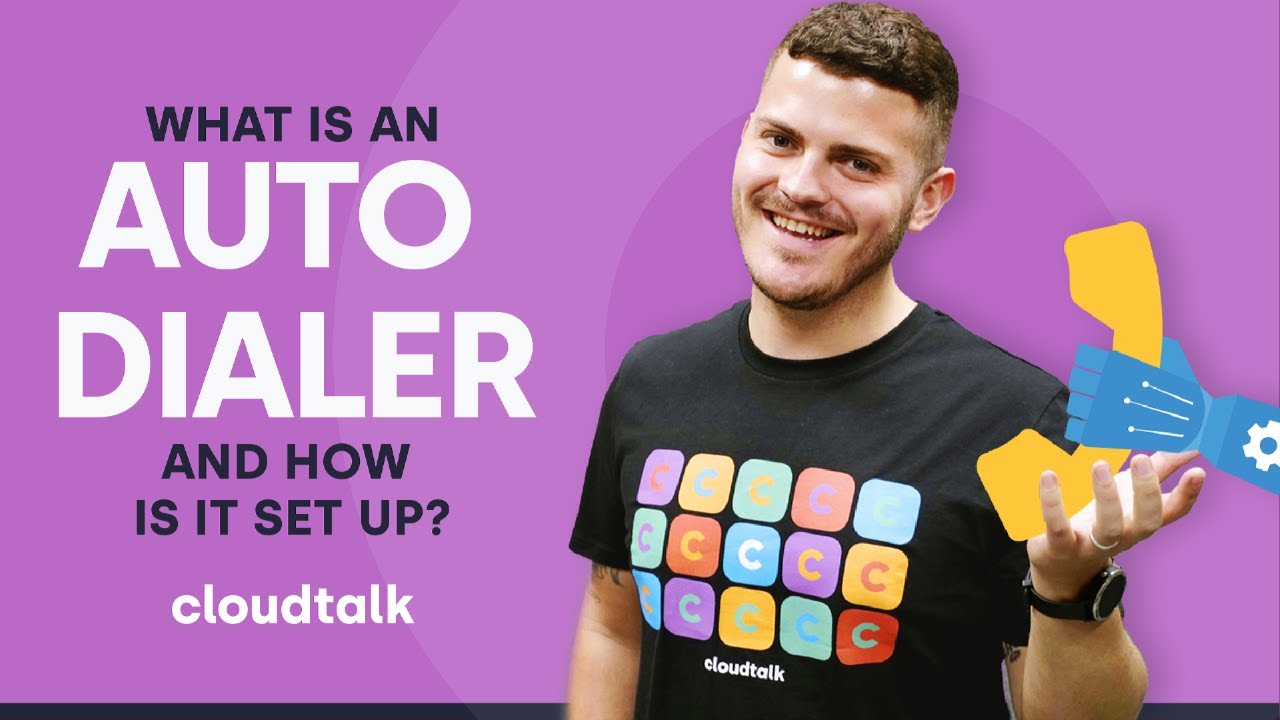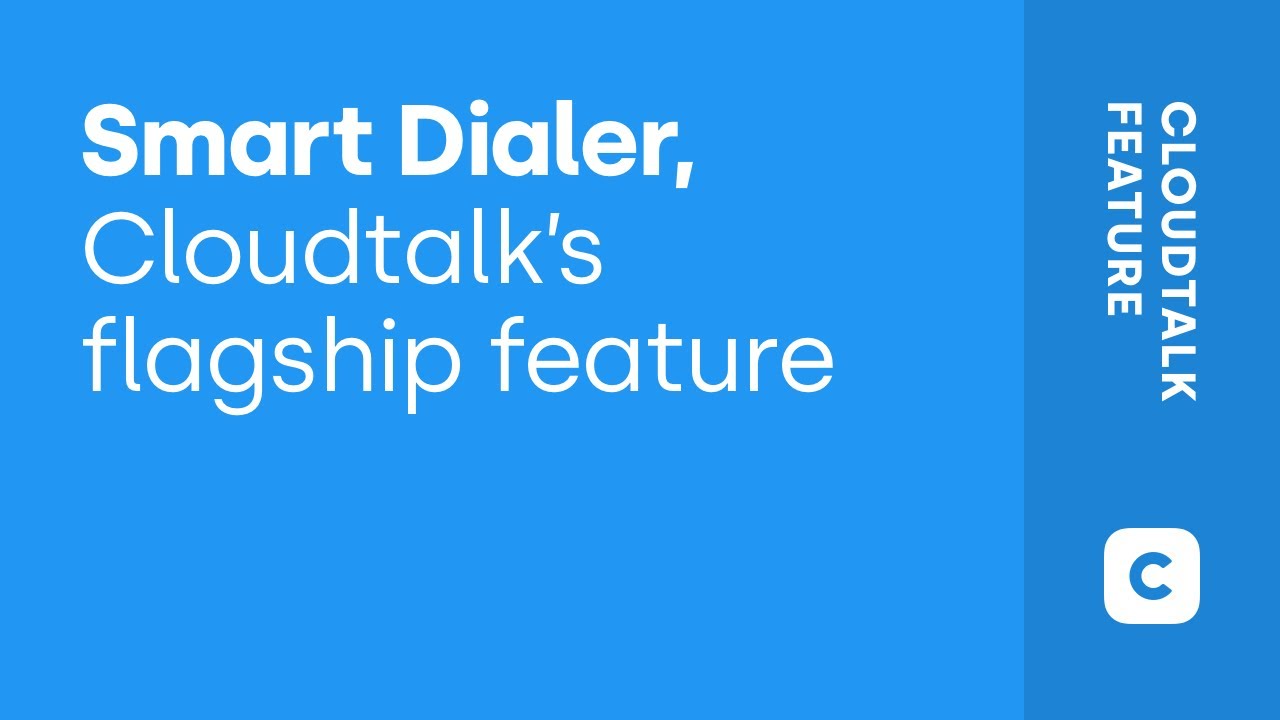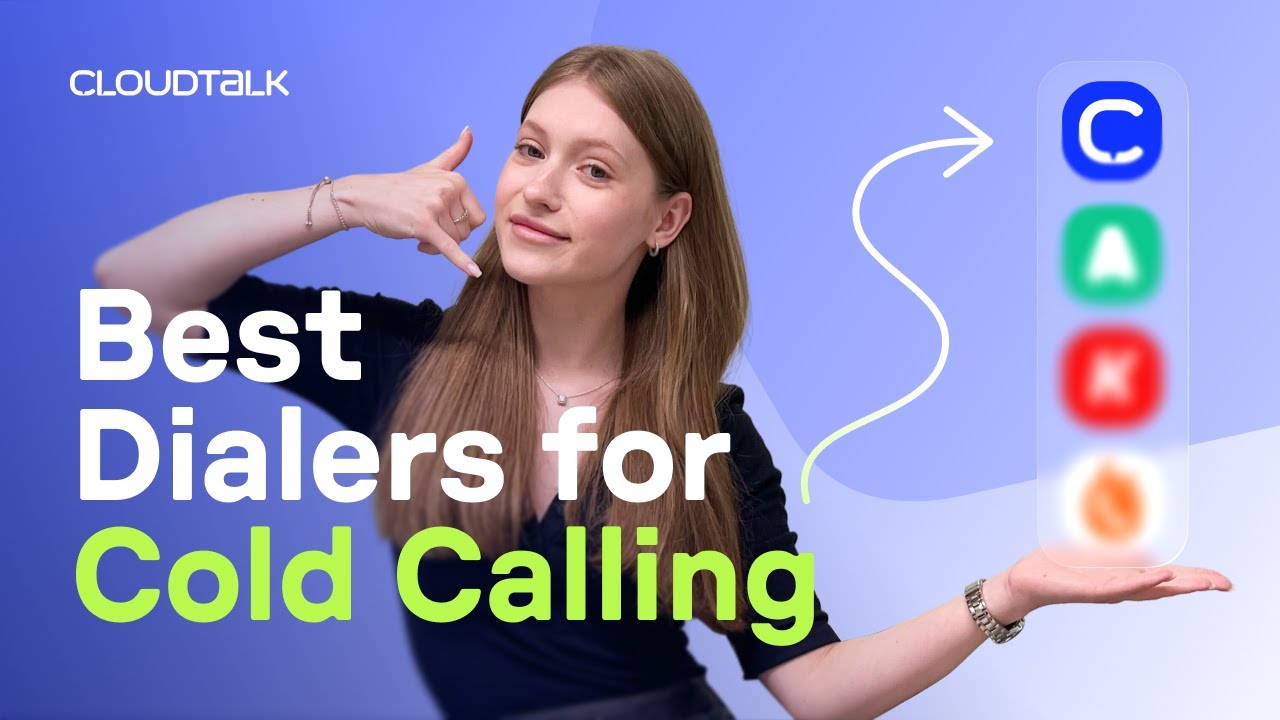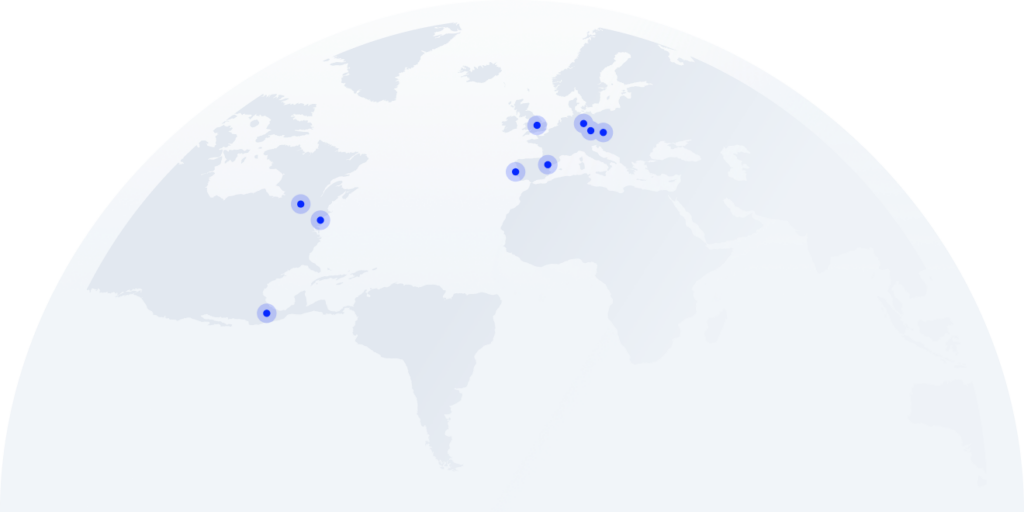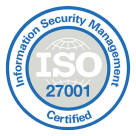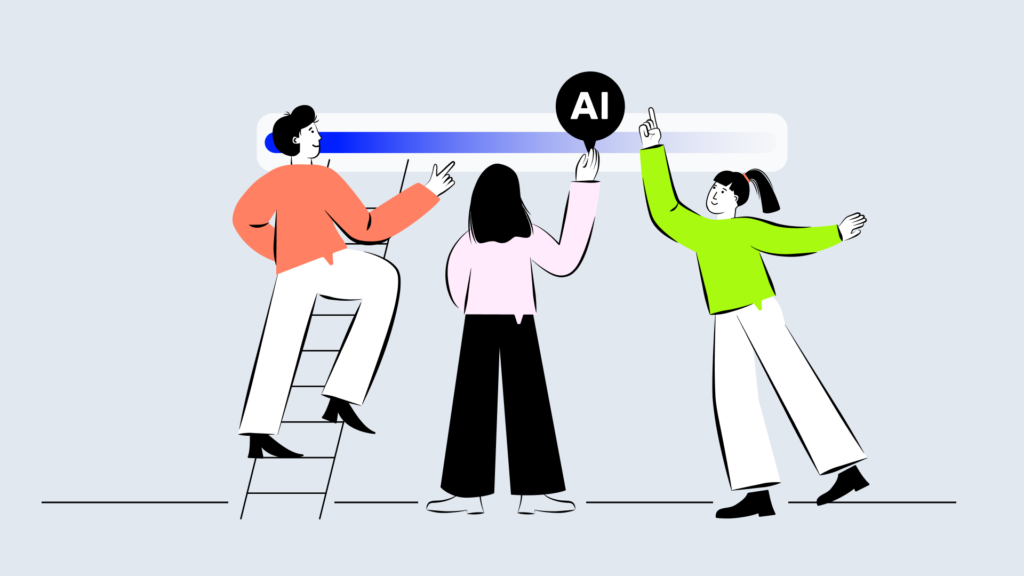
The fastest way to slow down your sales team? Make them dial every number manually.
Did you know most sales reps spend just 33% of their time actively selling?¹ The rest goes to manual dialing, admin, or waiting on voicemails.
To fix that, many outbound teams turn to auto dialers—tools that help reps spend more time talking and less time clicking.
And if you want to achieve that, progressive dialers rank among your best options. They automate calls without rushing reps, dialing only when an agent is ready. The result? Fewer awkward delays and better outcomes for lean sales teams.
In this guide, you’ll learn how progressive dialers work, how they compare to other dialing modes, and how to choose the best one for your team.
Key Takeaways:
- Progressive Dialers automate outbound calls while keeping reps in control, dialing only when they’re ready.
- Progressive dialing is ideal for lean teams that need efficiency without sacrificing compliance or conversation quality.
- Compared to predictive dialers, they offer fewer drops, smoother intros, and stronger legal alignment.
- Paired with features like CRM sync, voicemail detection, and real-time dashboards, they scale smart outreach.
Learn how progressive dialers ramp up your sales reps’ productivity, without breaching compliance.
What Is a Progressive Dialer?
A progressive dialer is a type of dialer that places one call at a time for each available agent.
It works automatically, dialing the next number in the queue (i.e., the selected contact list) only after the previous call ends. This helps reps connect with a live contact much quicker than when they dial manually. There’s also zero risk of connecting when no agent is available.
And this is what sets progressive dialers apart from the more aggressive modes like predictive dialing (but more on that later).
Are Progressive Dialers Legal?
Yes, progressive dialers are legal, but like all outbound dialing systems, they must follow regional regulations.
They’re considered one of the safest dialing modes under major compliance frameworks like:
- TCPA (Telephone Consumer Protection Act) in the U.S.,
- GDPR (General Data Protection Regulation) in the EU, and
- Ofcom (Office of Communications) guidelines in the UK.
Why? Because progressive dialers only initiate calls when an agent is available, reducing the risk of dropped or abandoned calls that often violate autodialer laws.
That’s also why progressive dialing is commonly used in compliance-heavy industries like finance, healthcare, and insurance, where even small slip-ups can result in penalties.
How Does a Progressive Dialer Work?
Progressive dialers automate outbound calling (i.e., the calls you make) while keeping the pace steady and agent-friendly.

Here’s what a progressive dialing workflow looks:
- Sales or ops teams create the call queue in advance, pulling contact data from a CRM (like HubSpot or Pipedrive), spreadsheet, or helpdesk platform (like Zendesk or Intercom)
- Agents change their status to available in the dialer platform once they’re ready to start calling
- The dialer places one call at a time, selecting the next number in the queue only when an agent is free (this helps you avoid dropped calls)
- The agent is instantly connected—they hear the phone ringing, and if the contact answers, the conversation starts right away. If there’s no answer, voicemail, or a busy tone, the agent logs the outcome and moves on.
- The dialer logs call outcomes automatically, usually syncing with the CRM so that agents can track notes, dispositions, and outcomes in real-time.
- Once the agent wraps the call, the dialer waits until they’re ready, then dials the next number, keeping reps in control, but always in motion.
By connecting agents only when someone answers, and only when they’re ready, progressive dialers help teams stay focused, efficient, and compliant, without losing momentum.
Pro Tip
Pro Tip: Mind that not all dialers support CRM or helpdesk integrations. Choose a dialer provider that offers native syncing, such as CloudTalk, so your agents always have context, and your managers have clean, reliable data.
Cut the clicks. Streamline every call with a dialer that waits for your reps. Try it for free.
Key Benefits of Progressive Dialers for Your Business
Manual dialing is slow and repetitive. Automated systems like predictive dialers are fast but often too aggressive, connecting calls mid-sentence or before a rep is ready. Both approaches create friction that costs your team time, focus, and opportunities.
Progressive dialers help you fix that. By giving reps just enough control, without slowing them down, they create smoother conversations, fewer mistakes, and more time spent actually selling.
Here’s how the benefits of progressive dialing play out in practice:
1. Increase Talk Time and Overall Efficiency
Remember the intro stat? With manual dialing, reps spend up to 70% of their time waiting for calls to connect, navigating phone trees, reaching voicemails, scribbling call notes, and manually logging outcomes into the CRM. This creates friction and leaves them with less time for real conversations.
Progressive dialers speed up outbound calling by automating the dialing process and connecting agents to one contact at a time. While your reps still handle calls that go to voicemail or don’t connect, the dialer removes manual steps, so teams spend less time dialing and more time talking.
2. Achieve Better Brand Perception
Fast-paced dialing (like predictive dialing) might seem efficient on paper, but it often leads to disjointed conversations or even dropped calls. When reps are thrown into back-to-back calls without prep time, they risk sounding flustered or impersonal. This might even result in hurting the customer experience.
Progressive dialers prevent that by introducing a natural pause between calls. Reps get a moment to catch their breath, review notes and customer details, or compose their opener.
That small window makes a big difference: calls feel more human, prospects feel heard, and your brand comes across as respectful and authentic.
3. Decrease Risk in Regulated Industries
As we mentioned earlier, progressive dialers comply with major outbound regulations like TCPA, GDPR, and Ofcom.
But they also support use cases that require HIPAA compliance, making them a safe choice for healthcare providers who handle sensitive patient data and strict follow-up protocols.
Take LKN Strategies, a U.S.-based healthcare provider. After switching to CloudTalk’s Progressive Dialer, they saw 40% fewer abandoned calls, and their agents handled 30% more conversations, while staying compliant and on the same headcount.
4. Integrate the Tools You Already Use
The best progressive dialer software removes this friction. With built-in integrations for platforms like Salesforce or HubSpot, call results are logged automatically, contact records stay clean, and agents never waste time retyping notes.
This gives managers a better visibility into team performance through Real-Time Dashboards that surface call volume, agent activity, and live outcomes.
And the sales reps? They have one less thing to worry about, and they can focus on connecting with leads instead of correcting data.
Pro Tip
Pro Tip: While progressive dialers help scale outbound efforts, total call volume may still be limited by carrier rules or VoIP provider thresholds. Be sure to check local telecom regulations when ramping up.
Boost conversations by 30% and cut missed calls by 40%. All with our Progressive Dialer.
Progressive Dialers vs. Other Dialing Modes
To understand where progressive dialing fits, let’s compare it with other dialing systems—each offering different advantages based on your team’s goals.
The overview below highlights how dialing modes stack up across speed, control, and personalization. Give it a look, and then we’ll move on to how specific dialing modes differ from the progressive dialer setup.
Dialer Type
How It Works
Best For
Agent Control
Speed
Personalization
Dials next contact after each call ends, once the agent is ready
Steady outbound with light automation
4/5
3/5
4/5
Dials next number instantly after a call ends, provided the agent is available
Fast, structured campaigns that convert
3/5
4/5
3/5
Dials up to 10 leads at once and connects the first to answer. Drops the rest or moves them back to the queue.
High-speed outreach with smart pacing
3/5
5/5
2/5
Agent reviews customer info and decides when to dial
High-stakes, personalized sales
5/5
2/5
5/5
Dialer queues leads from a CRM or website and lets the agent select who to call
Targeted dialing with higher ROI focus
5/5
4/5
5/5
Auto vs Progressive Dialer
Did you know an Auto Dialer isn’t actually a specific type of dialer (which is why you can’t find it in the comparison table above)?
It’s rather a broad term for any dialing system that automates the process of calling numbers without manual input (i.e., live agent interference). This means Power, Parallel, or Predictive dialers can all function as auto dialers, depending on how they’re configured.
So instead of looking for a tool labeled “Auto Dialer,” focus on dialing modes that support automation. That’s what really drives agent efficiency.
Power vs Progressive Dialer
A Power Dialer places one call per available agent and waits until the calling agent is ready again. It’s ideal for workflows where balance matters, combining steady speed with breathing room between calls.
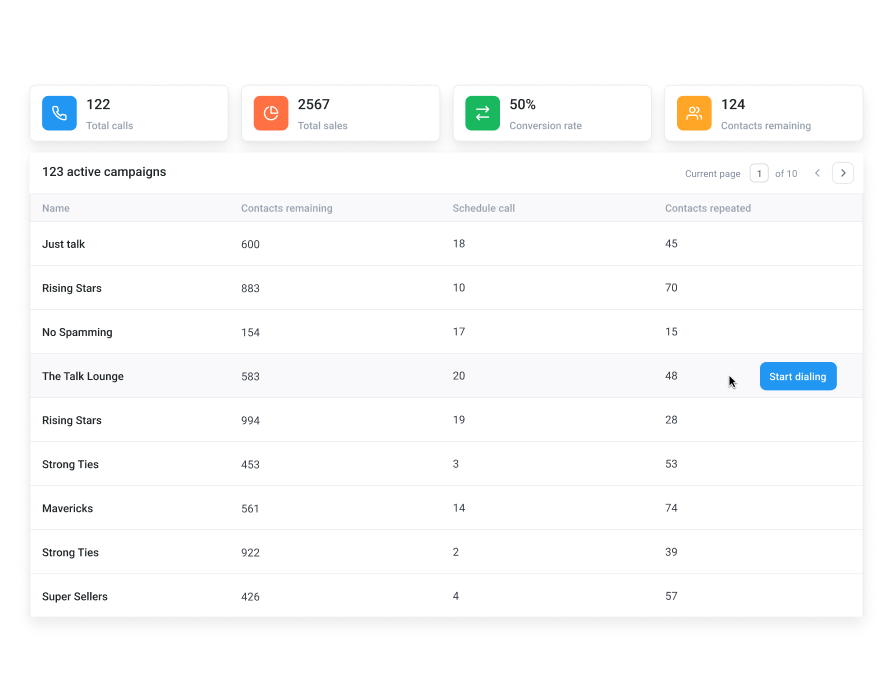
How exactly do Power and Progressive dialers differ?
While both modes use a 1:1 call-to-agent ratio, the key difference is pacing and control:
- Power Dialers initiate the next call immediately after the last call ends, often with no pause. This helps maximize outreach speed and minimize agent idle time.
- Progressive Dialers wait until the system confirms the agent is fully available (e.g., post-call wrap-up or manual “ready” signal) before dialing the next number.
Power Dialers are better for fast-paced campaigns, while Progressive Dialers are ideal for compliance-driven or higher-context outreach, where reps need a moment to review or log notes between calls.
Parallel vs Progressive Dialer
A Parallel Dialer calls multiple leads at once (up to 10x with suites like CloudTalk), and connects whichever answers first.
What about the rest? The dialer either drops them, leaves a voicemail, or moves them back to the call queue, depending on the provider’s configuration and pacing rules.
Check out the diagram below to see how exactly parallel dialing works in action
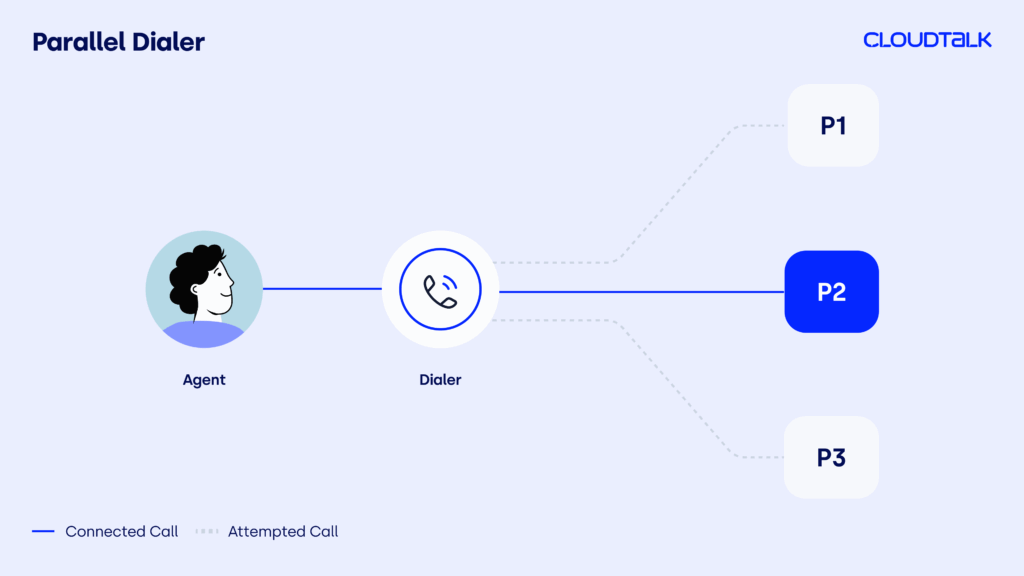
How exactly do Parallel and Progressive dialers differ?
The main difference lies in volume versus control:
- Parallel Dialers are multi-line dialers that prioritize speed, dialing in bulk and racing to find the first live connection. This can improve reach rates but increases the risk of dropped calls, overlapping conversations, and compliance issues.
- Progressive Dialers are single-line dialers that maintain a strict 1:1 ratio, always dialing one number at a time, only when an agent is available. This results in a slower but smoother experience with higher call quality and better regulatory alignment.
Parallel dialing is best for fast-paced campaigns with low personalization, while progressive calling suits teams that value steady pacing, compliance, and agent preparation.
Preview vs Progressive Dialer
A Preview Dialer gives agents time to view lead or customer info before they decide when to initiate the call.
This makes it a strong fit for high-context, personalized conversations, especially in regulated or consultative sales, such as mortgage lending, wealth management, or healthcare enrollment, where agents must review sensitive client data before the call, and tailor the conversation accordingly.
How exactly do Preview and Progressive dialers differ?
- Preview Dialers equip the sales rep with all the required context and put them in full control over when to start each call.
- Progressive Dialers call the first number automatically once the agent is ready. Once the first call ends, the dialer waits for a predefined period before dialing the next number, ensuring a consistent rhythm. At the same time, they offer live agents at least some context (e.g., name, company, last interaction) a few seconds before a call connects.
Choose preview dialing when quality trumps speed, and progressive when you want consistency without sacrificing agent control entirely.
Smart vs Progressive Dialer
A Smart Dialer queues leads from a CRM or website and lets agents dial through them using filters like deal stage, intent score, or time zone.

How exactly do Smart and Progressive Dialers differ?
- Smart Dialers give reps full control over who to call and when, based on CRM filters, segmentation rules, or lead prioritization. Calls are typically launched via Click-to-Call, allowing for personalized, timing-sensitive outreach.
- Progressive Dialers work with a pre-defined contact list, but they automate call flow by dialing the next lead as soon as the agent is ready. This creates a steady, structured workflow with minimal agent input.
Smart dialing offers greater flexibility and personalization, while progressive dialing minimizes manual effort and ensures consistent pacing.
Predictive vs Progressive Dialer
A Predictive Dialer uses AI-powered pacing algorithms to call multiple leads in advance, predicting when an agent will become available. When a live person answers, the system connects them to the next free agent…if one is available in time.
While once a go-to AI dialer for high-volume call centers, predictive dialers have seen declining usage in compliance-driven teams due to higher drop rates, poor agent handoffs, and regulatory risk under TCPA or Ofcom.
To get a better picture, see how predictive dialing works in action.
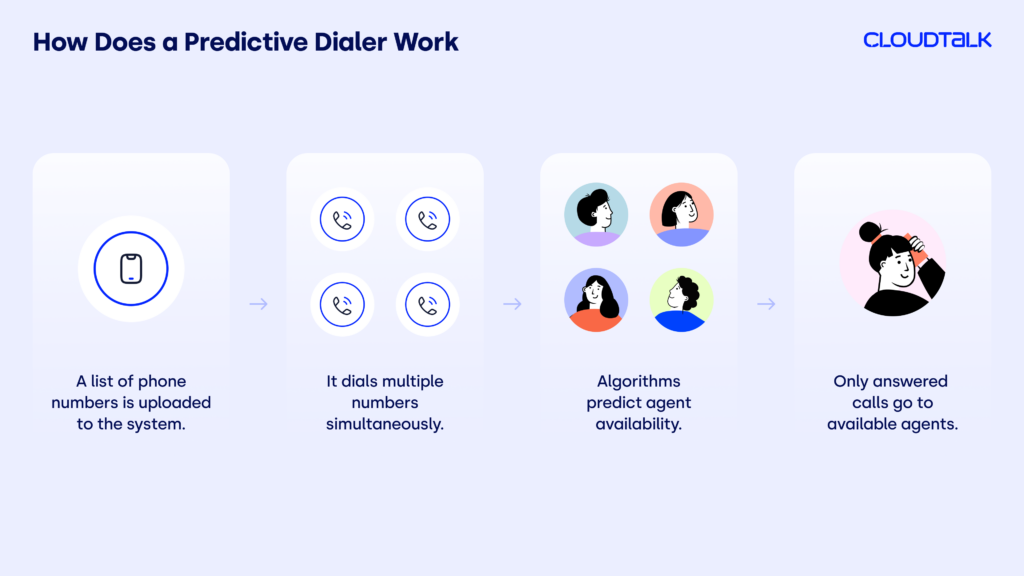
How exactly do Predictive and Progressive dialers differ?
- Predictive Dialers call ahead of agent availability. This maximizes volume but introduces a higher risk of dropped or abandoned calls.
- Progressive Dialers, in contrast, only dial when an agent is confirmed available, dramatically reducing compliance exposure and improving call experience.
If you’re moving away from predictive dialing (and you should), choose parallel dialing for speed or progressive dialing for control, compliance, and lower drop rates in regulated industries.
Use your free trial to see which agent dialer brings your teams the most value.
How to Choose the Right Progressive Dialer for Your Business
Are you ready to start looking for the progressive dialer that’ll take your call operations to the next level? In that case, be careful. You need to take your time during the selection process to ensure your calling goes as fast as it can.
When choosing the right progressive dialer, consider the following steps:
- Understand your team’s needs:
Consider whether your focus is on maximizing call volume, ensuring personalization, or balancing both. Progressive dialers are ideal for businesses aiming for efficient, high-quality outreach without overwhelming agents. - Prioritize ease of use:
Choose a dialer with a user-friendly interface that your agents can quickly adopt. Complicated systems can slow down productivity and create unnecessary roadblocks. - Look for CRM integrations:
A good progressive dialer should integrate seamlessly with your CRM or other tools to streamline workflows, improve contact management, and enhance reporting. - Evaluate reporting features:
Detailed Analytics and reporting are crucial for tracking performance, optimizing campaigns, and making data-driven decisions. Ensure the dialer offers robust reporting capabilities. - Check for compliance features:
Select a dialer that protects data and adheres to local regulations by minimizing dropped calls and maintaining low call abandonment rates. This will protect your business from potential penalties. - Consider scalability:
If your business is growing, opt for a solution that can scale with you. Look for features that support expanding teams and increasing call volumes. - Test the solution:
Whenever possible, request a demo or free trial. This hands-on experience will help you assess whether the dialer meets your specific needs and expectations.
Pro Tip
Pro Tip: A good demo shows the features. However, testing dialers in action with your team shows the fit. Make sure to choose a dialing mode that performs well in your real workflows.
Final Thoughts: Choose Progress Over Pressure
Progressive dialers offer a much-needed balance for modern outbound sales and support teams. They’re fast enough to keep outbound campaigns moving, but deliberate enough to protect connect rates, agent focus, and compliance.
By dialing one contact at a time, and only once your agent is ready, they reduce wasted dials, avoid dropped calls, and deliver smoother conversations from the start.
But even progressive dialing can’t solve every challenge alone.
That’s why CloudTalk gives you dialing flexibility. Use Progressive Dialing (single-line) when reps need more control and context. Switch to Parallel Dialing (multi-line) when speed matters most. Whatever the campaign, CloudTalk adapts to your outbound goals.
And we’re not just about dialers. With 100+ other features, 35+ integrations, and 160+ international numbers, you’ll have everything you need to scale efficiently without sacrificing quality or control.
Choose progress over pressure. Connect & see how progressive dialing changes the game.
Sources:

